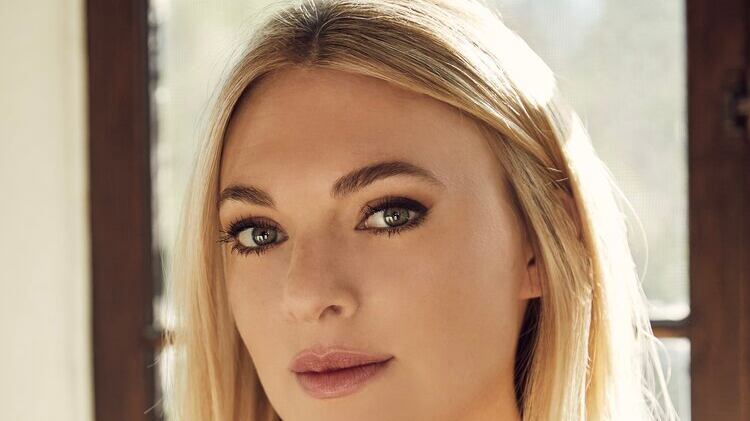A few days after Tess Gunty’s debut novel, The Rabbit Hutch (Knopf, 352 pages, $28), was announced as a finalist in fiction for the National Book Award, we sat down for a chat in our respective Zoom settings, with my dog snoozing on the couch behind me and her cat sauntering in front of her screen.
As our pets said hello, I congratulated her on the nomination. “When you’re a debut writer,” Gunty says, “your publisher is really taking a risk on you, so any kind of recognition like this is kind of just a relief, like you’re proving that at least their investment in you was not so foolish.”
“Foolish” is the opposite of how anyone would describe Gunty’s book, which tackles class, systemic racism, poorly regulated capitalism, and climate crisis. The themes are explored through the alternating perspectives of characters who live in or are in some way connected to La Lapinière, an affordable housing complex (referred to as the Rabbit Hutch) in the fictional town of Vacca Vale, Indiana.
Each character struggles with a different version of similar demons. At the forefront is Blandine, who turns to education as a means of escape and is one of four former foster youths in the story whose beginnings are molded by the failures of American foster care and public education (and, in general, collective systems of oppression).
After writing each of the foster youths’ backstories, Gunty cut those scenes. “I really didn’t want anyone to be like some mathematical equation of bad experiences,” she says. “I wanted to protect their individuality in the text and to not make anyone interpret their actions as the results of their best and worst experiences in the system.”
That nuanced approach extends to Moses, a middle-aged man whose occasional desire for revenge inspires him to cover his body in fluid from neon glow sticks and break into homes. Yet despite his actions, we can still gather up some compassion for him.
“It was important to me to make all the characters sympathetic, even when they were behaving in frightening and disturbing ways,” Gunty says. “I felt like I had to learn how to root for them when I was writing the chapters.”
Gunty says that the novel’s plot came rather late in her writing process. “I think that’s generally how I write: I tend to follow sentence to sentence, just trying to trust a kind of dream logic that will lead me somewhere, then, after the fact, refining it,” she explains.
Once about a third of her manuscript was formed, Gunty started fleshing out the plot. At the time, she was taking a master’s in fine arts class at New York University about mapping fiction. The professor, John Freeman (who later became her editor at Knopf), had the students retroactively map out the narratives of other novels, then do the same exercise for their own work.
“I took note cards and sort of put them around my room with the main events and the main themes,” Gunty says. “And that’s when I started to realize how the pieces would come together.”
Gunty envisioned many versions of The Rabbit Hutch’s final act. One idea came to fruition with the help of her brother, the artist and musician Nicholas Gunty, who illustrated the action-dense climax of the book with a figurative interpretation of what was going on in the scene.
“Nick understood the aesthetic of the book and what I was looking for really intuitively,” Gunty says. She proposed the idea to Knopf, who quickly gave the go-ahead for the artwork. The illustrated chapter is just one way that The Rabbit Hutch provides a multidimensional view of its characters’ responses to the events they experience.
By displaying each character’s unique response to the same situations, the novel offers a fresh escape from the trauma trope. Gunty references Parul Sehgal’s 2021 New Yorker article “The Case Against the Trauma Plot,” stating that film and literature often rely too heavily on trauma as a way to explain their characters into a set of paper-flat symptoms.
“Yes, trauma does affect us, and there’s no getting away from that,” she says. “But the way individuals react to traumatic events varies tremendously from individual to individual.”
GO: Tess Gunty appears in conversation with Cecily Wong (and moderator Kimberly King Parsons) at the Portland Book Festival, Miller Gallery at the Portland Art Museum, 1119 SW Park Ave., 503-227-2583, literary-arts.org. 12:45 pm-1:45 pm Saturday, Nov. 5. $15-$25 adults, $5 Arts for All, military servicemembers, veterans and 17 and under free. Gunty will make two more appearances at the Portland Book Festival on Nov. 5 (full schedule at literary-arts.org/bio/tess-gunty/).
